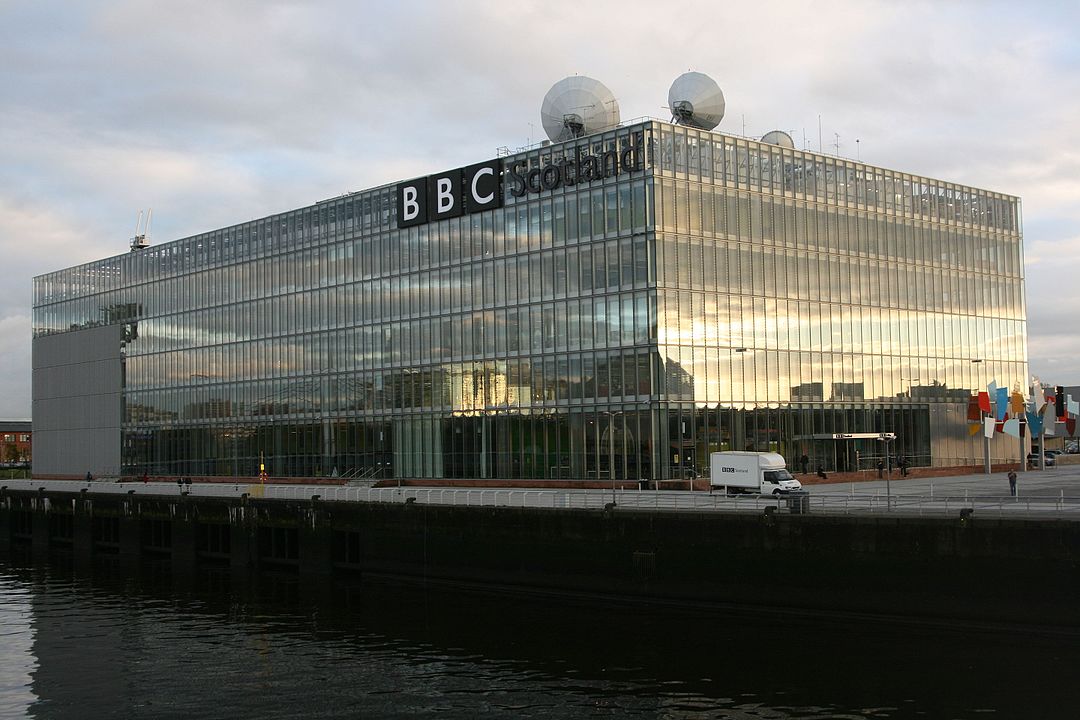News
BBC presenter scandal: an expert explains the law around exchanging sexually explicit images

FILE: BBC Pacific Quay in Glasgow (Photo By Batchelor, CC BY 3.0)
The developing scandal surrounding allegations that a BBC presenter paid a 17-year-old for explicit images is full of questions – the identity of the presenter (who remains unnamed in the media), the age of the young person when the alleged explicit images were taken, and of course, whether the allegations are true and can be proved to be true. What is known, however, is UK law when it comes to the exchange of sexually explicit material involving young people.
According to allegations by the young person’s mother published in The Sun, the presenter paid tens of thousands of pounds in exchange for explicit images. Online communications between the two allegedly began when the young person was 17.
The young person has claimed through their lawyer that “nothing inappropriate or unlawful has taken place”. Whether this can be established to be true or not will depend in part (it also depends of course on whether they
were explicit so as to breach the law) on the age of the young person when the images were exchanged. If the images were exchanged after the young person turned 18, it could be that no law was broken. If, however, they were under 18 – a child, for the purposes of the law regarding indecent images – there could hypothetically be a range of possible offences, the seriousness of which could increase depending on the circumstances.
The age at which young people can share explicit photographs is higher than the age at which they can consent to sexual activity. The self-production by children of indecent images is an area of increasing concern in this age of poorly-regulated social media. The claims in this case, then, are likely to be taken seriously, irrespective of whether or not the young person consented.
From what we know – and it is a very incomplete picture at the moment of
course – the most likely offence to be under consideration here will be that set out in in the Protection of Children Act 1978. This law makes it an offence to take, show, make, distribute or advertise indecent photographs or “pseudo-photographs” of a child. The definition of “make” includes livestreamed images, since, when viewed, images are “made”.
It is also an offence under the Criminal Justice Act 1988 to possess an indecent photograph of someone under the age of 18, even if the photos were distributed after the person in them turned 18.
For anyone to be convicted in a case of that sort, a jury would have to consider the image to be “indecent”. This is an objective decision based on recognised standards of propriety and include the age of the child.
Importantly, it is not a defendant’s conduct that must be regarded as indecent, but the photograph of the child which results from it. The age of the child would be relevant to whether the images are indecent.
Police and prosecutors could decide that a jury is likely to feel that a child was close enough to 18 for the image not to be indecent, and so take no action.
Police have not yet launched an investigation. But if action is ultimately taken and were to lead to a prosecution and conviction, the likely sentence (based on what we have been told so far) would be based on the making or possession of images involving “non-penetrative sexual activity” by a child. The offence of making the image attracts a sentence starting at two years’ imprisonment, while possession starts at 26 weeks.
An abuse of power?
There is the statement from the young person’s lawyer, while their family reportedly sees this as a case of coercion by a person in a position of considerable influence on a vulnerable young person.
Any abuse of power or trust could be an aggravating factor which, for sentencing purposes, could increase the maximum sentence to four years’ imprisonment for the making offence. A judge may also take into account the vulnerability of the child depicted, the number of images made or possessed and whether the child appeared to be intoxicated or drunk.
In this particular case, the mother’s claims that the large amount of money she alleges was paid to her child was used to fuel significant drug consumption could, if proven, give rise to other, more serious offences.
The Sexual Offences Act 2003 makes it an offence to intentionally cause or incite a child (again, under 18) to be sexually exploited, and carries a maximum sentence of 14 years imprisonment. Sexual exploitation here includes the provision of sexual services for payment. Since 2017, it extends to situations where images are streamed (such as via the internet) or otherwise transmitted by some other technological means.
Again, in cases under the act, the young person’s age could be relevant. Should the presenter claim that he thought the child was over 18 – questions that are no doubt being currently asked – then a potential prosecution would need to establish that the average person would not have held the same belief.
The age of a child in a prosecution is also relevant at sentencing, with the maximum sentence available being significantly reduced where the victim is aged 16 or 17. The starting point for sentencing would potentially be 12 months’ imprisonment but, if the judge felt that there had been “cultivation of a dependency on drugs or alcohol”, this could increase to a starting point of three years’ imprisonment with a maximum likely sentence of around five years’ imprisonment.![]()
Kirsty Welsh, Senior Lecturer in Law, Nottingham Trent University
This article is republished from The Conversation under a Creative Commons license. Read the original article.





















